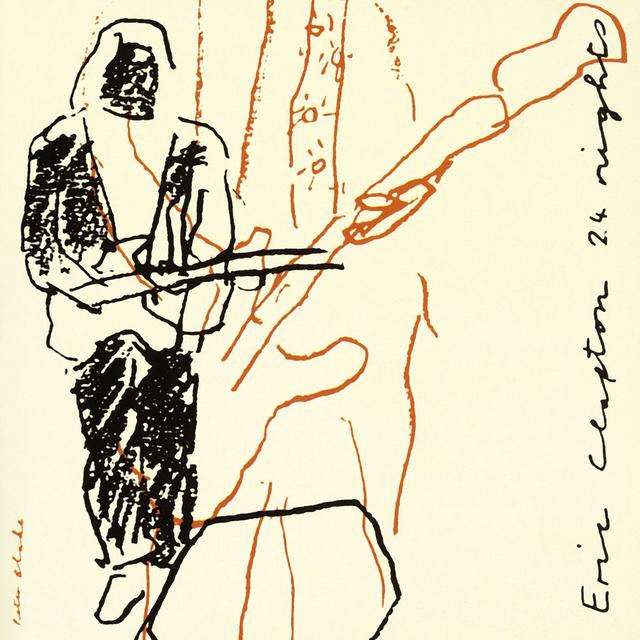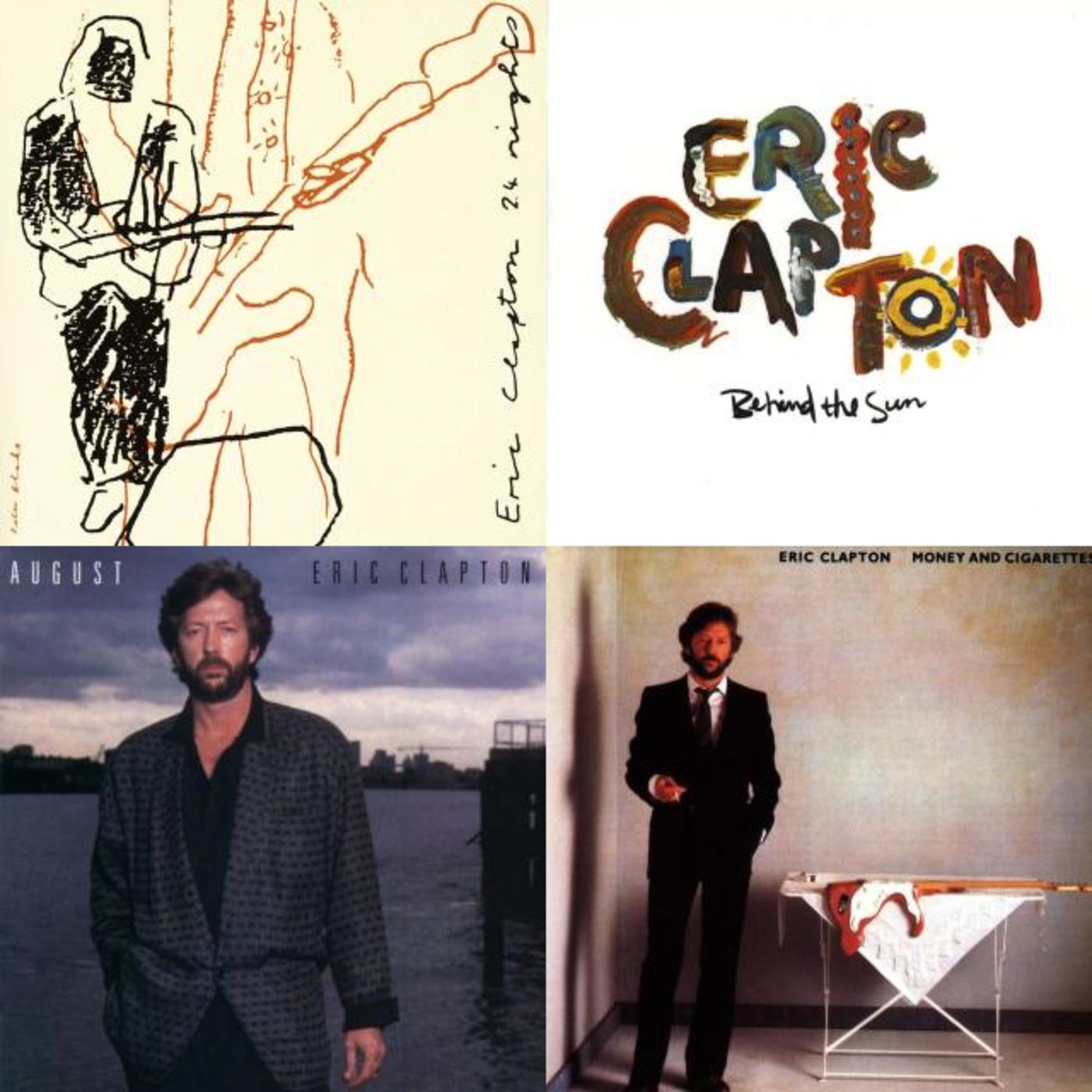LIVE from Your Speakers: Eric Clapton, 24 NIGHTS

Eric Clapton’s lengthy stands at London’s Royal Albert Hall in 1990 and 1991 were of course working nights for the 45-ish-year-old guitarist, but they were also celebrations. Clapton had experienced something of a commercial resurgence with 1989’s double-platinum JOURNEYMAN, which had ended a three-year period of looking backward over the length and breadth of his career, an effort capped by the massive (and massively successful) 1988 box set CROSSROADS. A consistent touring presence over this period kept Clapton in shape and front of mind with his audience, so by the time of the Albert Hall shows, he was as sharp as he’d ever been as a performer, and his audience was as excited as ever to see him play.
His two runs at the venue numbered 42 shows in total (24 in 1990 and 18 in 1991), with a combination of current and classic material played in four distinct instrumental configurations. Some of the audiences got to see Clapton front a four-piece band; some a nine-piece formation; there were also nights given over strictly to blues material, with copious guests (Buddy Guy, Robert Cray, Jimmy Vaughan) sitting in; finally, there were orchestral shows, in which Clapton played with an ensemble from the National Philharmonic Orchestra.
On 24 NIGHTS, each group is featured, and each lends a distinctive texture and impact to Clapton’s songs. The blues performances are uniformly excellent, as one would imagine, considering the pedigree of the star and his guests (Cray, in particular, shines on Buddy Guy’s “Watch Yourself,” while standing next to Guy himself. Gutsy, to say the least). The four-piece ensemble cooks on the set’s Cream material, particularly on “Sunshine of Your Love” and “White Room.” On the latter, drummer Steve Ferrone – always a precision machine behind the kit – plays with power, matching Clapton’s fuzzed-out Strat playing note for note, stroke for stroke.
The nine-piece band is best on Clapton’s then-recent material, like JOURNEYMAN’s “Pretending” and “Bad Love.” On the latter, Clapton’s late-song solo (after the false ending and “Badge”-like buildup) is nothing short of chilling, all perfectly wrung high notes, leading into the song’s coda. That leads into extended runs through “Old Love” and the classic “Wonderful Tonight”– the former a 13-minute album highlight; the latter among the more delicate pieces on the record. The set culminates with three orchestral songs (conducted by the late Michael Kamen), peaking with a lush and lovely “Bell Bottom Blues.”
24 NIGHTS is a fine live document of Clapton as both elder statesman and contemporary star, placing some of his best material in the most satisfying of settings, at a critical time in his career.
Eric Clapton’s lengthy stands at London’s Royal Albert Hall in 1990 and 1991 were of course working nights for the 45-ish-year-old guitarist, but they were also celebrations. Clapton had experienced something of a commercial resurgence with 1989’s double-platinum JOURNEYMAN, which had ended a three-year period of looking backward over the length and breadth of his career, an effort capped by the massive (and massively successful) 1988 box set CROSSROADS. A consistent touring presence over this period kept Clapton in shape and front of mind with his audience, so by the time of the Albert Hall shows, he was as sharp as he’d ever been as a performer, and his audience was as excited as ever to see him play.
His two runs at the venue numbered 42 shows in total (24 in 1990 and 18 in 1991), with a combination of current and classic material played in four distinct instrumental configurations. Some of the audiences got to see Clapton front a four-piece band; some a nine-piece formation; there were also nights given over strictly to blues material, with copious guests (Buddy Guy, Robert Cray, Jimmy Vaughan) sitting in; finally, there were orchestral shows, in which Clapton played with an ensemble from the National Philharmonic Orchestra.
On 24 NIGHTS, each group is featured, and each lends a distinctive texture and impact to Clapton’s songs. The blues performances are uniformly excellent, as one would imagine, considering the pedigree of the star and his guests (Cray, in particular, shines on Buddy Guy’s “Watch Yourself,” while standing next to Guy himself. Gutsy, to say the least). The four-piece ensemble cooks on the set’s Cream material, particularly on “Sunshine of Your Love” and “White Room.” On the latter, drummer Steve Ferrone – always a precision machine behind the kit – plays with power, matching Clapton’s fuzzed-out Strat playing note for note, stroke for stroke.
The nine-piece band is best on Clapton’s then-recent material, like JOURNEYMAN’s “Pretending” and “Bad Love.” On the latter, Clapton’s late-song solo (after the false ending and “Badge”-like buildup) is nothing short of chilling, all perfectly wrung high notes, leading into the song’s coda. That leads into extended runs through “Old Love” and the classic “Wonderful Tonight”– the former a 13-minute album highlight; the latter among the more delicate pieces on the record. The set culminates with three orchestral songs (conducted by the late Michael Kamen), peaking with a lush and lovely “Bell Bottom Blues.”
24 NIGHTS is a fine live document of Clapton as both elder statesman and contemporary star, placing some of his best material in the most satisfying of settings, at a critical time in his career.
For more information, click the buttons below:

